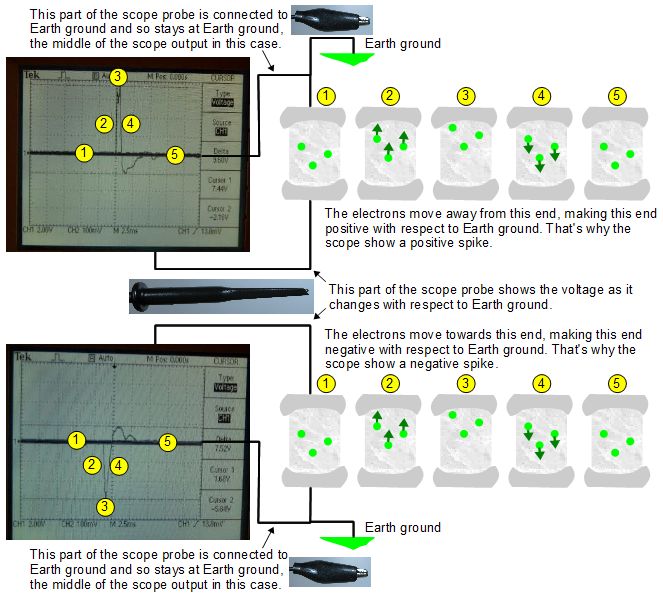How to test Rochelle salt piezoelectric crystal
Needing some piezoelectric crystals I decided to make some rochelle salt crystals. I've detailed the steps on my how to make rochelle salt crystals page. Once I had a crystal I then proceeded to test its piezoelectricity as detailed below. Note that this test procedure can be used with pretty much any type of piezoelectric crystal.
The following diagram is intended to explain why you get a positive spike if the oscilloscope probe is hooked up one way and a negative spike if it's hooked up the other way, as is demonstrated above. Notice in the diagram below that in both cases the electrons in the crystal move the same way during the tap. The difference in scope output is due to the way the spoke probe is connected to the crystal. In the positive spike case the electrons move toward the grounded probe tip and away from the ungrounded probe tip, leaving it positive with respect to ground. In the negative spike case they move away from the grounded probe tip and toward the ungrounded probe tip, leaving it negative with respect to ground.
The spike you see on the scope output represents what happens at the ungrounded probe tip. What happens at the grounded probe tip is nothing, because it's connected to Earth ground. On the scope output the grounded probe tip is represented by the horizontal line at 1 and 5 in the diagram and never moves vertically from that position.
If neither of the probe tips were grounded then the scope output would be two lines that start out touching but then briefly move equally apart from each other, one in the positive direction and the other in the negative. Most benchtop oscilloscopes have one tip grounded. The crystal does have a specific end which will always be positive and the other negative when it is tapped and that's what you'd see.

Video - How to test a Rochelle salt crystal
One of the times I made some crystals I decided to make a video of my testing. Enjoy!
